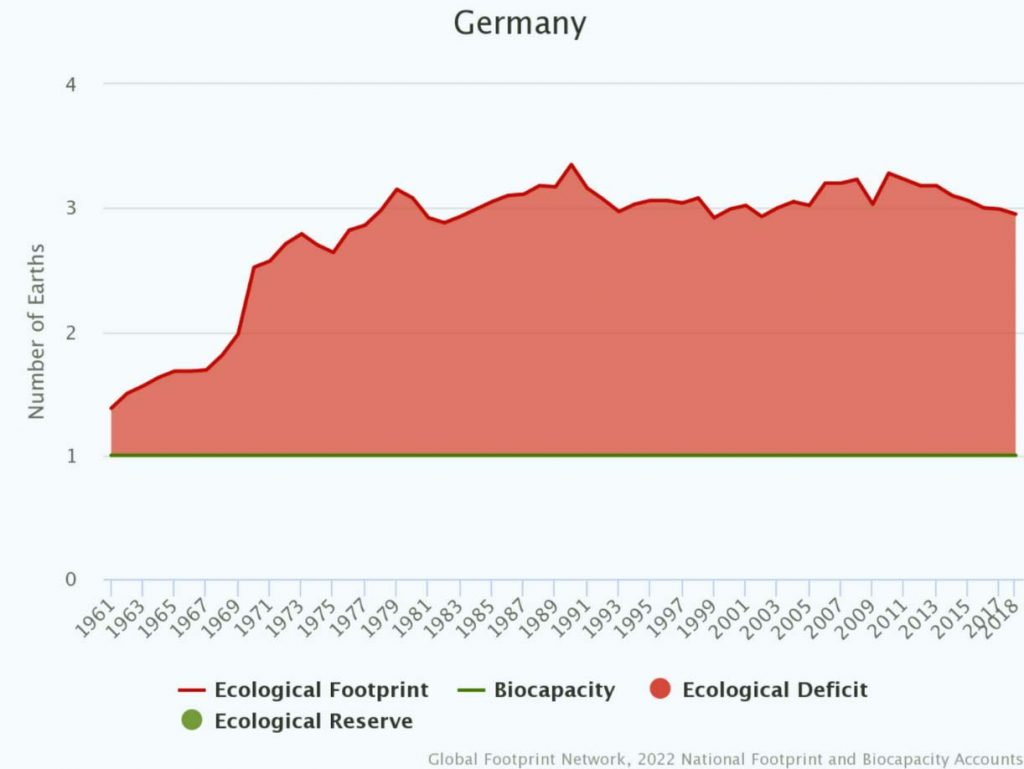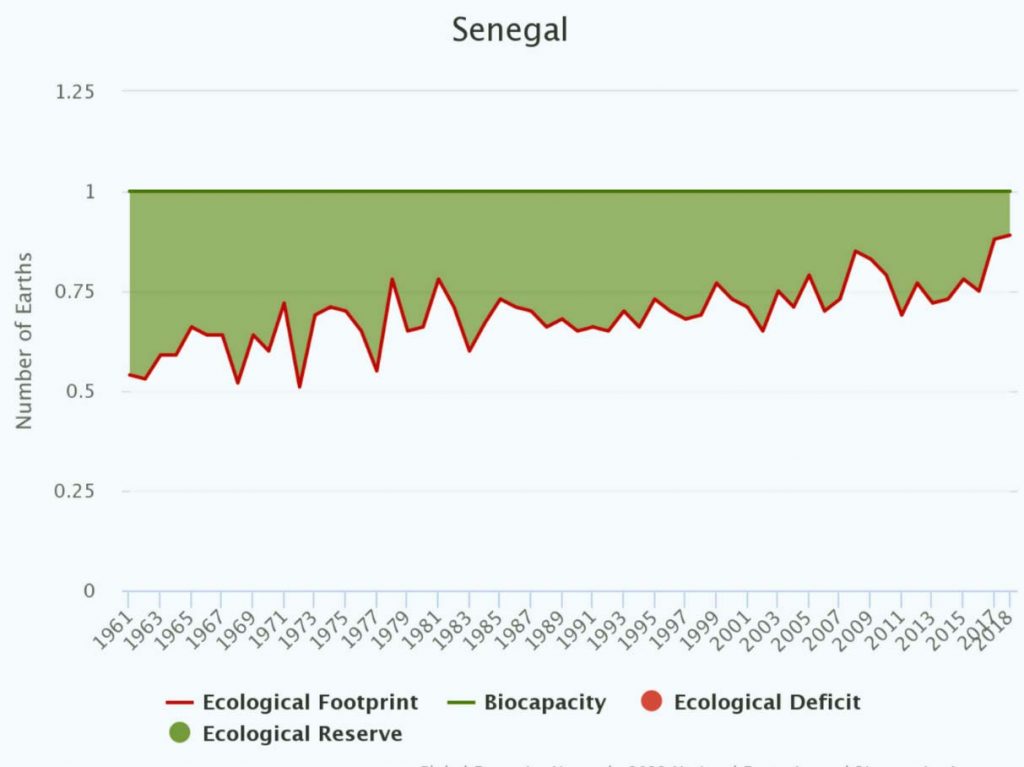The Ecological Footprint
The Ecological Footprint reflects the area necessary to enable our lifestyle. For example, we would need a total of five Earths if the entire world population had the resource consumption of the people in the USA.
But the ecological footprint of Europeans is also far too high! According to the Global Footprint Network, 2.95 Earths are necessary to enable the standard of living in Germany, while the value for Senegal is 0.89 Earths (as of 2018).


You can find more information about the ecological footprint and a calculator for your personal footprint at https://www.footprintnetwork.org/. Here it quickly becomes clear that it is hardly possible for Europeans, even with a very conscious lifestyle, to keep the ecological footprint so small that it stays within a sustainable range.
Approximately 60 % of the ecological footprint is made up of the CO2 footprint, which can be calculated individually like the ecological footprint. According to the UN, global per capita emissions must be reduced by an average of about 2 to 2.5 metric tons of CO2 to meet the goal of the Paris Climate Agreement. For the richest 1 percent of the world’s population, this would mean a reduction by a factor of 30, while the per capita emissions of the poorest 50 percent of the world’s population could increase by about three times. This is because the cumulative emissions of the richest 1% of the world’s population are twice those of the poorest 50%.
Travel and climate
Particularly high greenhouse gas emissions are caused by travel, especially air travel – another privilege of the wealthy part of the world’s population, who often make several air trips a year, while the majority of people from the global South never fly.
Conscious travel behavior helps to keep the ecological footprint of your vacation small. The general rule is to avoid air travel whenever possible, including short-haul and connecting flights, since takeoff and landing in particular are energy-intensive and emissions are correspondingly high. And for destinations that can only be reached by air, the general rule is: fly less often and stay longer. This also gives you more time to get to know the country and its people in a relaxed way.
If you would like to support a climate fund project as compensation for the greenhouse gas emissions of your flight, we suggest the following contributions. This only applies to the flight, and not to the greenhouse gas emissions caused by your accommodation, food, other consumption and local mobility. So rounding up is a good thing anyway!
Guide for the amount of the contribution for the compensation of air travel:
- Short haul* (2.800 km) | Ex.: Vienna – London, Berlin – Paris, Brussels – Rome | 20 Euro
- Medium haul (9.500 km) | Ex.: Europe –Senegal/Togo, Europe – the Canary Islands | 68 Euro
- Transcontinental 1 (14.500 km) | Ex.: Europe – South Africa, Europe – New York City | 105 Euro
- Transcontinental 2 (34.000 km) | Ex.: Europe – South America, Europe – Australia | 245 Euro
* For journeys of less than 1.000 kilometres (per trip), plane trips ought to be avoided if possible.
